Discovering hidden swimming spots in Italy gives you the chance to experience a side of the country that’s anything but ordinary—far from the summer chaos, deeply authentic, and truly revitalizing. Here, you'll come across natural pools, secluded beaches, alpine gorges, and mountain lakes. These wild corners invite complete renewal, deep connection with nature, and the kind of quiet only the most untouched places can offer.
In this article, we’ll take you through 15 unmissable locations: from the spectacular Spiaggia dell’Arcomagno in Calabria to the crystal-clear waters of Cala Mariolu in Sardinia, all the way to the serene bathing spots along the Fer Stream in the Aosta Valley. Each destination has been selected based on real reviews, crowd levels, natural setting, and unique atmosphere. You'll learn how to get there, when to go, and how to fully enjoy the experience. Get ready to explore Italy’s most secret and captivating side.

Italy off-the-radar swimming: how to plan it
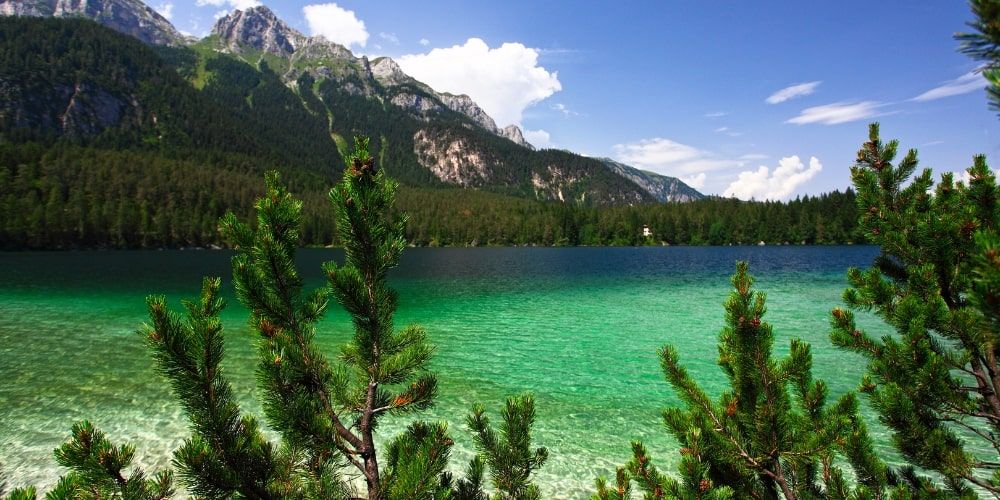
Discovering hidden swimming spots in Italy is the perfect opportunity for those looking to escape the crowds of summer beaches and reconnect with authenticity and tranquility. The best time to explore these secret waters? Spring, September, or weekdays—when the weather is pleasant and the tourist bustle fades away. Seas and lakes are just as inviting, minus the high-season chaos.
As for how to get there, some spots require a local boat ride, while others can be reached by scenic hiking trails or with the help of experienced local guides. A light trek through gorges or pine forests offers unbeatable views.
What should you pack? Along with a swimsuit, bring water shoes or durable sandals, a reusable water bottle, a light snack, and a minimalist backpack so you can move easily. Most importantly, respect the environment—leave no trace behind.
Why choose wild swimming? To reconnect with genuine relaxation, be surprised by extraordinary natural settings, and nourish your soul with restorative landscapes. Our slow travel tip: take your time. Pause to take it all in, wade in slowly, and enjoy each place at a gentle pace, far from the tourist rush. That’s how you truly sync with the nature surrounding you.
Hidden swimming spots Italy: 15 enchanting places to discover
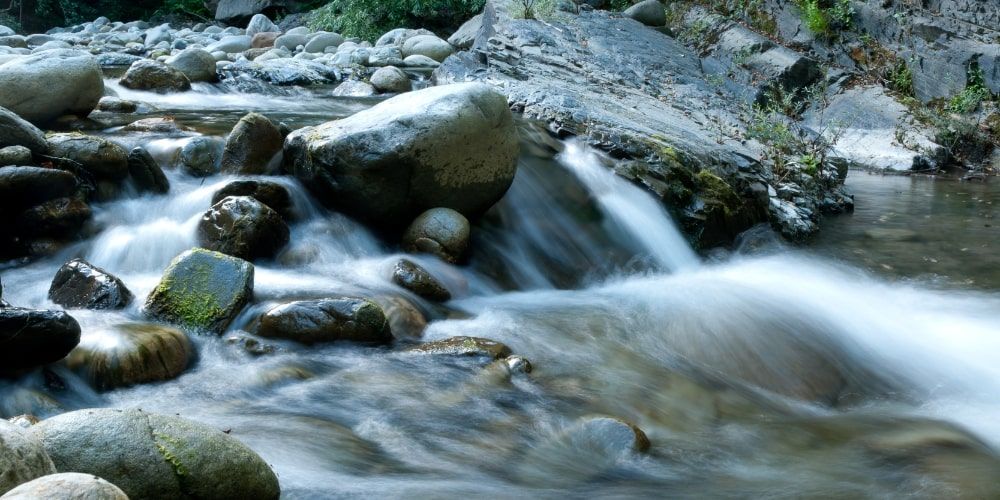
Here’s a curated list of exclusive spots to swim far from the crowds: from the fairytale waters of Fiordo di Furore in Campania to the more intimate Lago di Venere in Sicily. Each location is handpicked for its authenticity, untouched beauty, and serene atmosphere.
Listen to the podcast version of the article with the voice of Monna Lisa & Leonardo
15. Cala Mariolu (Sardegna)

At the top of the list as one of the most iconic hidden swimming spots in Italy is Cala Mariolu. This destination boasts naturally turquoise waters and a beach made of smooth white and pink pebbles that reflect the sunlight like snow at sunset. Surrounded by towering limestone cliffs nearly 500 meters high, it offers a breathtaking panorama.
The easiest way to reach it is by sea, boarding from Cala Gonone, Santa Maria Navarrese, or Arbatax, with dinghy tours or mini-cruises that often include stops at Cala Goloritzè and the Bue Marino Cave. For the more adventurous, there’s a challenging 6–7 km trek starting from the Golgo Plateau, recommended for experienced hikers. The trail winds through Mediterranean scrub forests with dramatic sea views along the way. It’s a landmark spot for those seeking relaxation in pristine scenery and looking to snorkel in crystal-clear waters.
14. Bagni della Regina Giovanna (Campania)
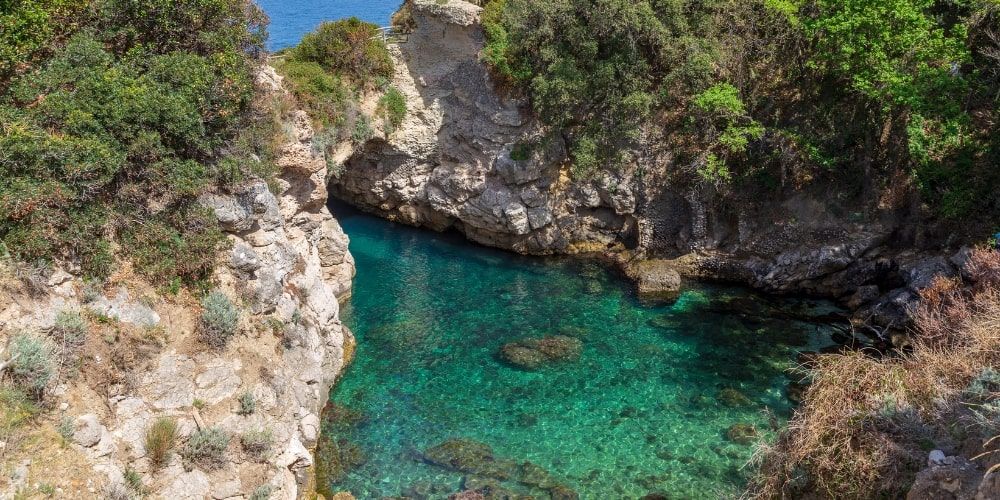
The Bagni della Regina Giovanna are a haven of romantic and natural charm. This natural pool lies within a rocky cave connected to the sea, framed by limestone cliffs and the ancient ruins of Villa Pollio, dating back to Roman times. Its calm, crystal-clear waters over a smooth stone bottom create an atmosphere suspended between myth and untouched nature.
The best time to visit is in spring, in September, or on weekdays, when the sun lights up the pool without the pressure of crowds. During the summer, avoid peak hours to enjoy a more peaceful and contemplative experience.
To reach this stunning spot, you can walk from Sorrento in about 40–45 minutes or take a local bus to Capo Sorrento followed by a short 750-meter walk. For a more adventurous option, book a kayak or canoe tour from Sorrento that leads straight to the hidden bay.
If you plan to extend your stay, consider pairing this outing with a visit to Naples using the Naples Pass. It includes unlimited public transport in the city and discounted access to several museums, including the National Archaeological Museum, the Royal Palace, and nearby archaeological sites like Pompeii and Herculaneum. This combination offers a perfect balance between pristine nature and the rich historical and cultural heritage of Campania.
Visit Naples with Napoli Pass13. Tovel Lake (Trentino-Alto Adige)
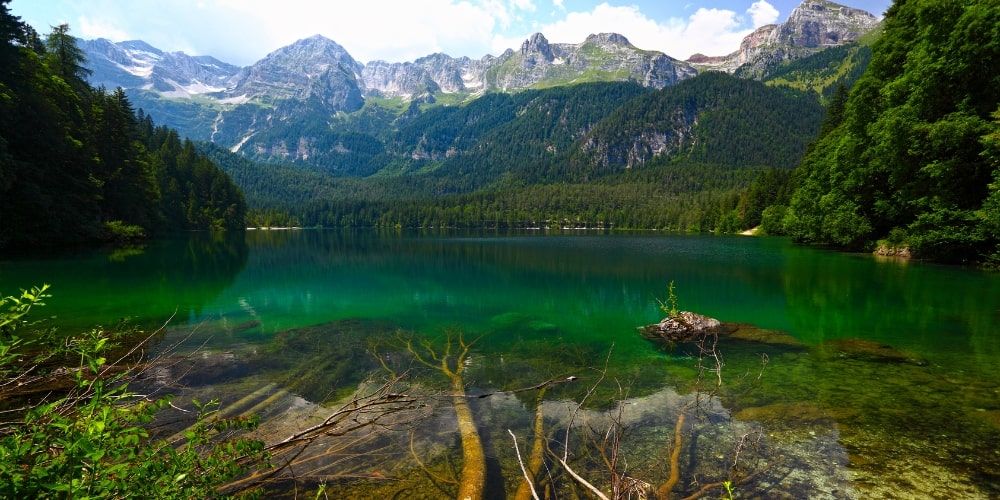
Nestled in the Adamello-Brenta Nature Park at an altitude of 1,178 meters, Tovel Lake is one of the most breathtaking hidden swimming spots in Italy—a pristine alpine lake with crystal-clear emerald waters, framed by the Brenta Dolomites and surrounded by lush forests and meadows. It was once known as the "red lake" due to a summer reddening phenomenon caused by the Tovellia sanguinea algae. However, this phenomenon has since disappeared due to climate change.
You can reach this enchanting place by car. From Tuenno, follow signs for Lake Tovel via the SP14 of Val di Tovel, a scenic 11-kilometer road that ends at a parking lot near the lake. It's essential to purchase your parking ticket in advance at the official ticket office located at Via Trento 109, Tuenno.
For those who prefer hiking, a fantastic alternative is the Sentiero delle Glare. This trail begins in the locality of Capriolo and crosses a lunar-like landscape formed by the collapse of Mount Corno. It winds through rocky terrain and forests before reaching the lake’s shores, offering a truly unique trekking experience.
12. Arcomagno Beach (Calabria)
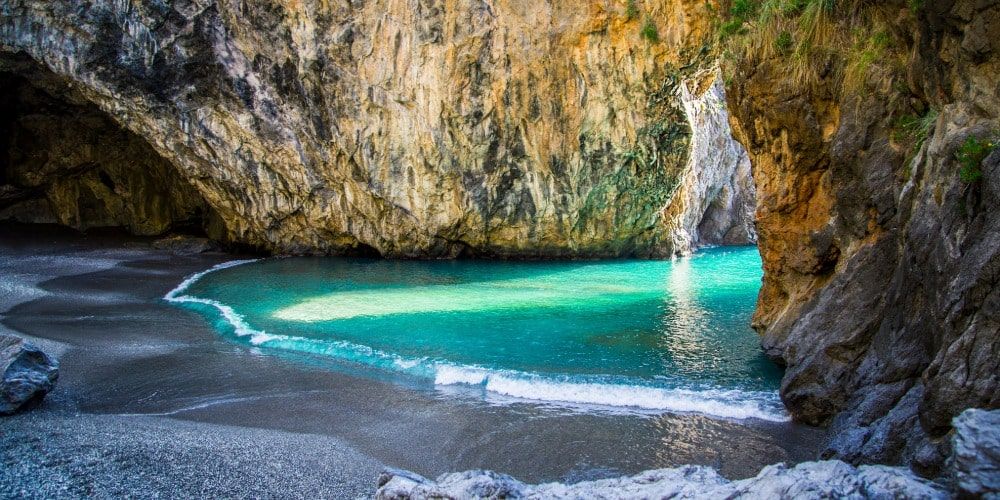
Along the untamed Riviera dei Cedri, Arcomagno Beach is a fairytale-like cove nestled in a natural rock amphitheater, crowned by a majestic arch that reflects the turquoise sea onto white pebbles and soft sand.
To get there, you can park in Marinella or in the center of San Nicola Arcella, then follow a short but spectacular trail carved into the rock. The path is steep in places, so proper footwear is recommended. Alternatively, you can reach the beach by sea—by boat, kayak, or pedal boat—from San Nicola Arcella or Praia a Mare, enjoying the coastal scenery from a whole new perspective.
11. Fiordo di Furore (Campania)
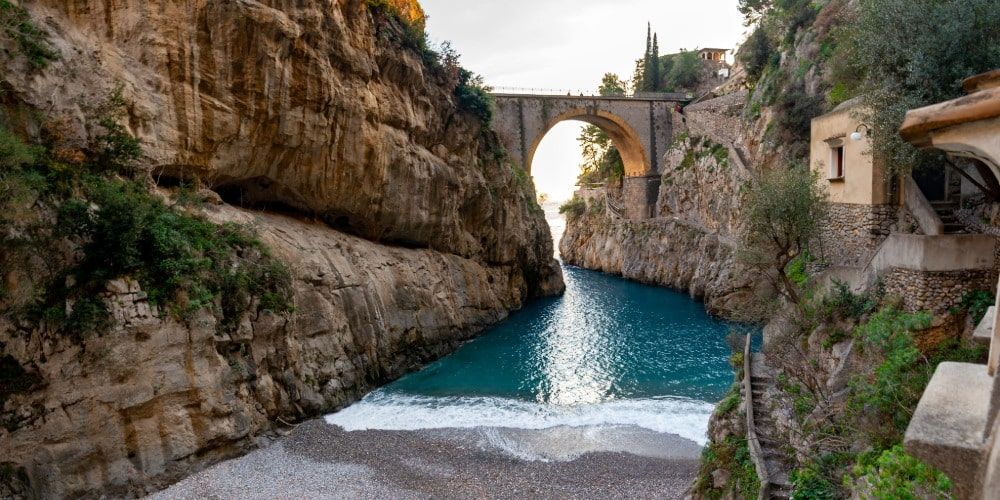
Tucked between cliffs, the Fiordo di Furore is one of the most striking and photographed spots along the Amalfi Coast. This narrow, dramatic inlet, crowned by an elegant 30-meter-high arched bridge, shelters a tiny pebble beach lapped by emerald-green waters. The blend of rugged rock, sea, and silence creates a suspended, almost surreal atmosphere.
The most straightforward way to reach this hidden gem is by taking the SITA bus from Amalfi or Positano, getting off at the “Furore” stop, and walking down about 200 steps. It’s also accessible by sea, with boat or kayak tours departing from Marina di Praia.
Discover the kayak tour along the Amalfi Coast10. Terme di Petriolo (Tuscany)
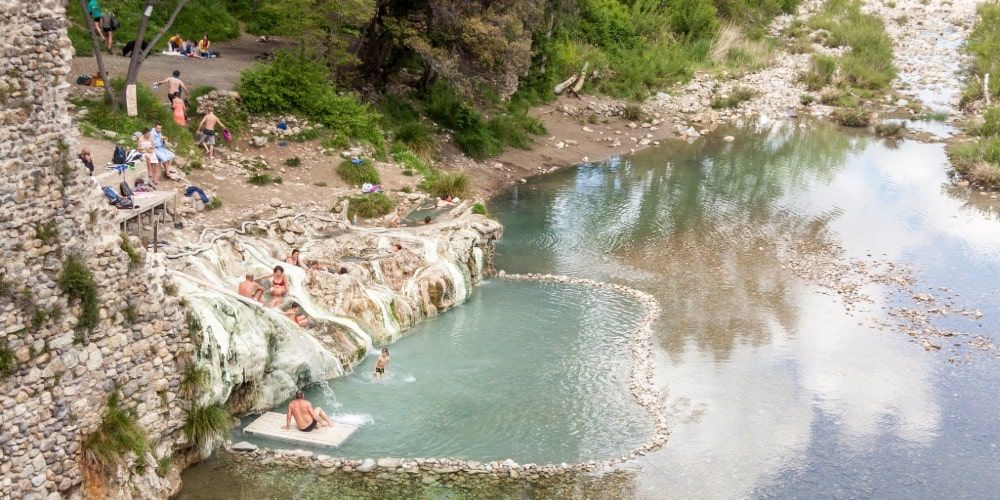
The Terme di Petriolo offer open-air, sulfur-rich natural pools with warm water at around 43°C that flows directly from underground along the Farma River. The waters, rich in sulfur, calcium, and fluoride, have invigorating and decongestant properties that have been known since Roman times.
Located in the Basso Merse Nature Reserve, they are easily accessible from the Siena–Grosseto highway (SS223). Approximately 30 km from Siena, take the exit marked for “Bagni di Petriolo” and follow the SP4 until you reach the bridge over the Farma River, where you can access the springs. Parking is available near the pools, followed by a short walk through greenery.
What to bring? A swimsuit, water shoes or flip-flops, a towel, and a reusable water bottle. The terrain can be slippery, so be sure to wear appropriate footwear. For a slow and relaxing experience, pack sunglasses and a book, and let yourself be soothed by the sounds of nature.
9. Porto Selvaggio (Puglia)
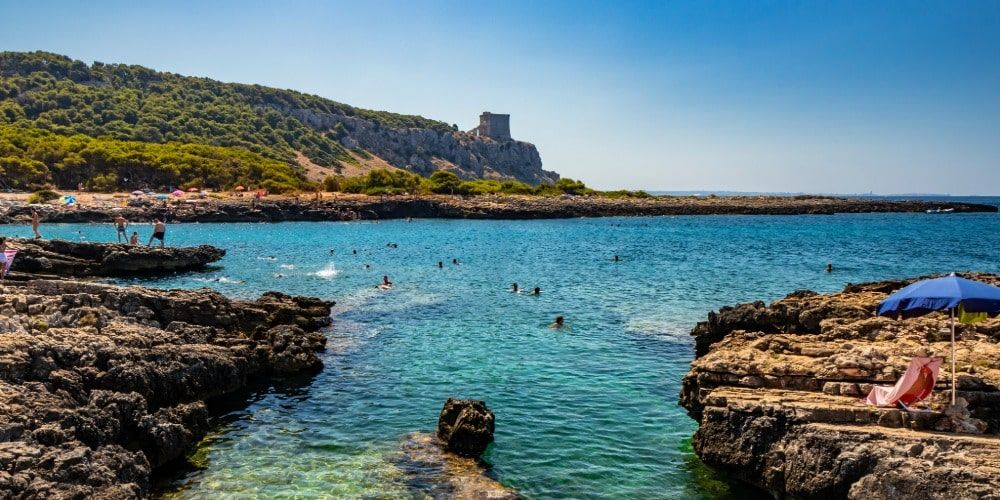
In the heart of the Porto Selvaggio and Palude del Capitano Regional Nature Park, Porto Selvaggio Beach is a true gem of the Ionian coast in Salento. It features a rocky cove nestled within a pine forest, with crystal-clear waters and seabeds perfect for snorkeling, all framed by wild, untouched nature.
If you're driving, follow the SP268 toward Nardò and park near the entrance to Villa Tafuri (around €5 per day). From there, a roughly 1 km trail winds through Aleppo pines and Mediterranean scrubland, leading to the beach. If you prefer public transportation, take bus line 104 from Lecce or Gallipoli (available in summer) and get off at the stop near the park’s parking area.
8. Pozze Smeraldine (Friuli-Venezia Giulia)
The Pozze Smeraldine, located in Val Tramontina, are emerald-green water oases nestled among the limestone rocks of the Meduna River. These natural pools, framed by white stone and lush forests, offer a sense of absolute peace and primal beauty that captivates even the most discerning visitors.
To get there: from Tramonti di Sopra, follow the SR552 and then the signs directing you to the pools. After reaching a small parking area, continue on a dirt path for about 30 minutes on foot through meadows and well-marked trails.
What to bring? Hiking shoes with good grip for slippery rocks, a swimsuit, towel, and a light snack. Wake up early—these icy waters at dawn are the perfect natural recharge.
7. Rabbit beach (Lampedusa, Sicily)
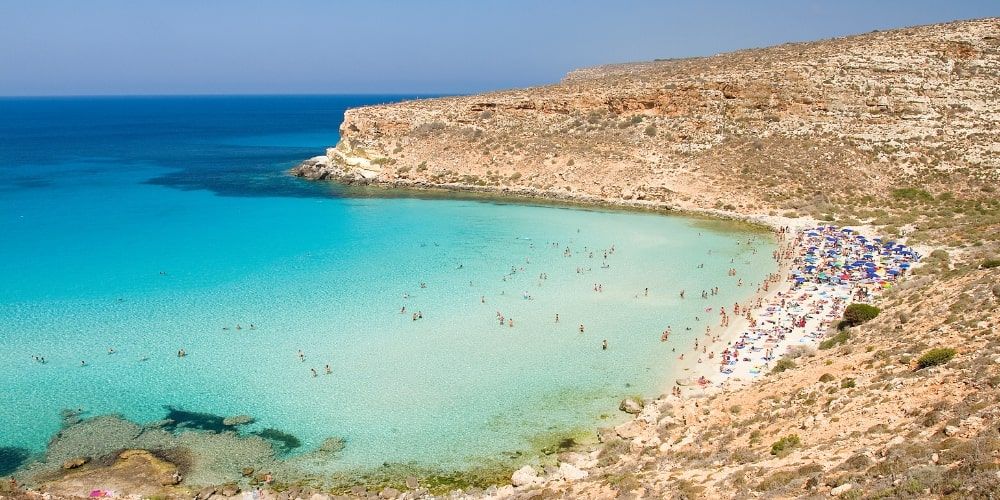
Considered one of the most spectacular beaches in the Mediterranean, Rabbit Beach opens into a dreamlike bay of ultra-white sand, crystal-clear turquoise waters, and the iconic Rabbits Island just offshore—a natural sanctuary for loggerhead sea turtles (caretta). Part of the Protected Marine Area of the Pelagie Islands, it’s a place of extraordinary beauty and ecological sensitivity, which is why access is regulated.
To reach it, you must leave your car along the provincial road and follow a dirt path of about 800 meters through rocky terrain and Mediterranean scrub. Comfortable, sturdy footwear is recommended—flip-flops are best avoided. Entry to the beach is free but limited: you must book a time slot online, with access available between 8:30 AM and 7:30 PM.
The best time to enjoy a swim in these pristine waters is between May and early June or in September, when the weather is ideal and crowds are fewer.
A pure seaside experience—untouched nature and silence worth preserving.
6. Cala Tre Buchi (Puglia)
When it comes to hidden swimming spots in Italy, Cala Tre Buchi in Monopoli stands out as a true natural gem: a small cove facing the Adriatic, marked by three rock arches carved by wind and sea.
Perfect for wild swimming enthusiasts, this secluded inlet captivates with its raw authenticity—you won’t find beach clubs or umbrellas here, just untouched nature and a peacefulness that speaks of freedom. Pale limestone cliffs contrast with the deep blue sea, and the rocky seabed offers excellent snorkeling conditions with great visibility and marine life.
The best time for a dip? June or September, when the weather is ideal and the crowds are minimal. Even in July and August, though busier, it retains a quieter feel compared to more famous beaches.
To get there, park on Via Procaccia and walk along rocky paths. It requires attention—and a bit of adventure—but it’s a short, rewarding journey.
Pro tip: bring water shoes, sunscreen, water, and a hat. Once you reach the beach, you can set up your umbrella and enjoy this phenomenal spot—a perfect escape for a genuine swim in an unforgettable natural setting.
5. Lake of Venus (Pantelleria, Sicily)
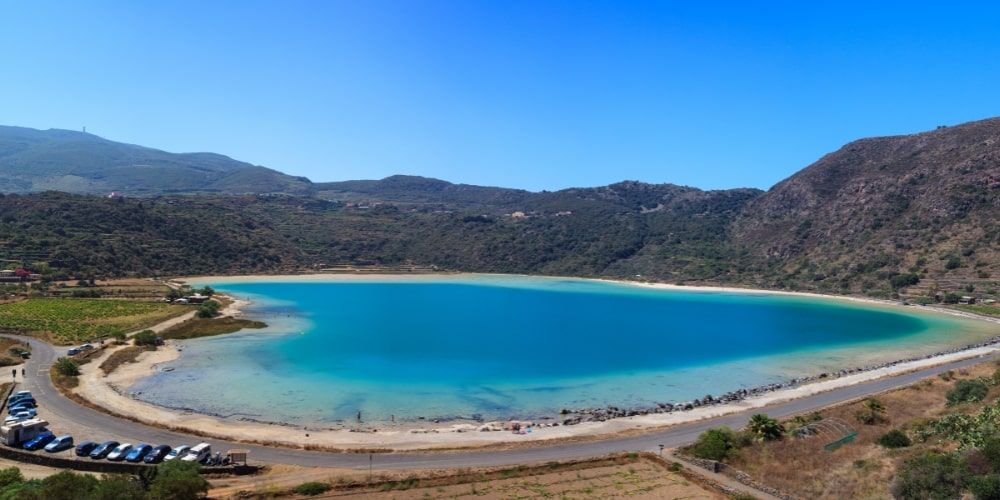
Among the most enchanting hidden swimming spots in Italy, Lake of Venus—also known as the Mirror of Venus—is a volcanic wonder nestled in the heart of Pantelleria. This emerald-green thermal basin, fed by natural springs that reach between 104°F and 122°F, offers a truly restorative wellness experience. The mineral-rich mud, packed with sulfur, potassium, and sodium, provides a rejuvenating effect on the skin and contributes to the lake’s almost mystical atmosphere.
Formed in a volcanic crater, the lake has an elliptical shape measuring about 450 by 350 meters, with a maximum depth of 12 meters—ideal for a slow, relaxing dip. Reaching it is simple: take a scenic hiking trail of about 6 km.
4. Stretti di Giaredo (Tuscany)
The Stretti di Giaredo presents itself as a true “masterpiece sculpted by water” from the Gordana stream: a deep, narrow gorge approximately 1 km long, with vertical rock walls reaching up to 50 meters, punctuated by crystal-clear pools that invite a refreshing swim in visually hypnotic surroundings.
Their charm lies in the contrast between pastoral landscapes and wild ravines: the trail begins among meadows and chestnut groves, then descends into the riverbed where each step demands caution and a spirit of adventure. Walking through water between layered rock formations and natural pools sets this site apart from typical coastal trails.
To get there, from Pontremoli, follow signs for Zeri and Cavezzana Gordana. The SP37 road turns into a dirt path with a parking area at the end, from which the trail to the gorge begins.
Bring trekking or water shoes with non-slip soles, a swimsuit, a towel, and a light wetsuit. A waterproof phone case is also handy for capturing the stunning views. The water’s chill may be intense, but the awe-inspiring beauty of the place is well worth the effort.
An exhilarating river adventure in an untouched, truly surprising natural setting.
3. Jamaica Beach (Lombardy)
Jamaica Beach reveals itself as a stunning stretch of smooth white rock slabs, kissed by crystal-clear waters that shimmer in emerald and sapphire hues.
To get there, park your car near the Drawbridge at the entrance to the Sirmione peninsula, just before the Scaligero Castle. Continue on foot by following the signs to the Grotte di Catullo—choose between the lakeside trail or the elevated panoramic path, both equally scenic. A gentle uphill walk leads to the entrance of the ruins, where a gate near the café and ticket office opens to a path descending toward the shore.
From that point, an easy trail winds down between olive trees and polished rocks, skimming the water’s edge and bringing you to the beach in just a few minutes. Comfortable shoes and a spirit of freedom are all you need—this is the perfect spot for wild swimming surrounded by history and untouched nature.
2. Candalla (Tuscany)
Among the most captivating hidden swimming spots in Italy, Candalla is a true natural marvel nestled in the hills between the Apuan Alps and the Apennines. The icy waters of the Lombricese stream flow through natural pools, waterfalls, and narrow gorges, framed by chestnut groves and the ruins of ancient mills along charming trails.
This unique place enchants with its dual nature: a balance between peaceful walks through bucolic paths and thrilling dives into wild ravines. The contrast between the cool, fig-scented forest and the crystal clarity of the natural pools creates a timeless, almost primal atmosphere.
To get there, park along the road leading to the old Candalla mill, just outside Camaiore, and follow the path that runs alongside the stream. In just a few minutes, you’ll reach the main pools, passing over smooth rocks and remnants of historic industrial structures.
1. Torrente Fer (Valle d’Aosta)
The Torrente Fer is one of the most breathtaking and wild lesser-known swimming spots in Italy. It flows through the Cignas forest, carving out a series of crystal-clear natural pools and smooth rock gorges nestled in the alpine heart of the Aosta Valley. This stream offers a rare wild swimming experience—quiet, restorative, and immersed in untouched nature. Its icy, transparent waters invite refreshing dips among waterfalls and narrow passages, ideal even for canyoning adventures with expert guides.
To get there, follow the road toward Donnas and then the signs for the Cignas area. Park near the trail that runs alongside the stream. After a short walk, you’ll reach the first pools, but the most scenic ones reveal themselves on deeper hikes along the riverbed.
A remote and authentic place, perfect for those seeking a plunge into the purest alpine wilderness.
FAQs about secrets spots where to swim in italy
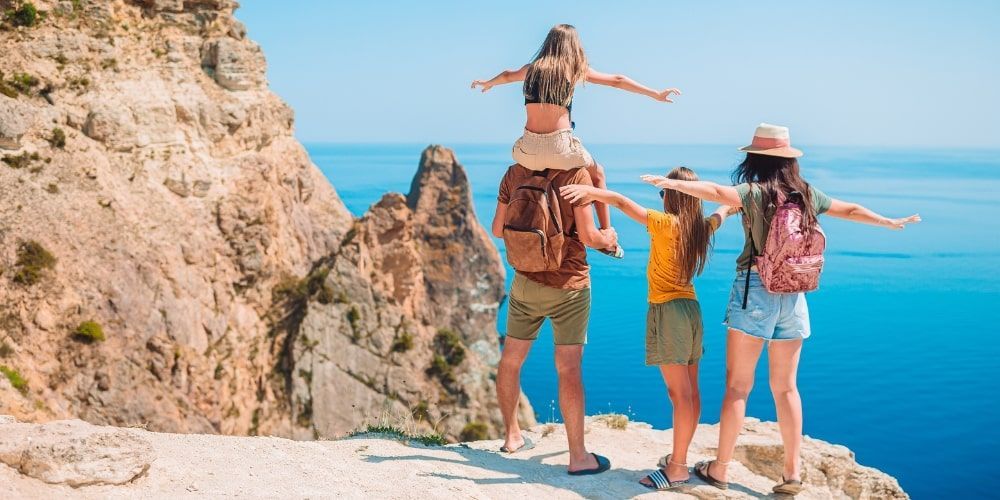
Are these hidden swimming spots in Italy suitable for families?
Many of Italy’s hidden swimming spots are family-friendly, especially those with easy access and shallow waters like Lake Tovel, Porto Selvaggio, or Spiaggia dei Conigli. However, more rugged locations like Candalla or Torrente Fer require greater caution and are best suited for families with children who are comfortable walking on uneven terrain. It’s always wise to check local conditions beforehand and be properly equipped.
Can I bring pets?
Pets are welcome at many of these hidden swimming spots in Italy, but it depends on the location. In natural areas like Candalla or Pozze Smeraldine, dogs are generally allowed as long as they’re leashed and respectful of the environment. However, in more regulated sites like Rabbit Beach or Lake of Venus, pet access may be restricted or prohibited to protect delicate ecosystems. Always check the specific rules in advance and bring water and waste bags for your pet.
Is it safe to swim off the beaten path in Italy?
Swimming off the beaten path in Italy can be safe, but it requires caution and preparation. Many of these places are wild and lack services, so strong swimming skills, avoiding strong currents or risky jumps, and wearing water shoes or hiking sandals are essential. Avoid going alone, and always carry water, a charged phone, and a small first aid kit. In more remote areas like Torrente Fer or the Stretti di Giaredo, hiring a local guide can enhance safety.
About the author
Written on 07/08/2025


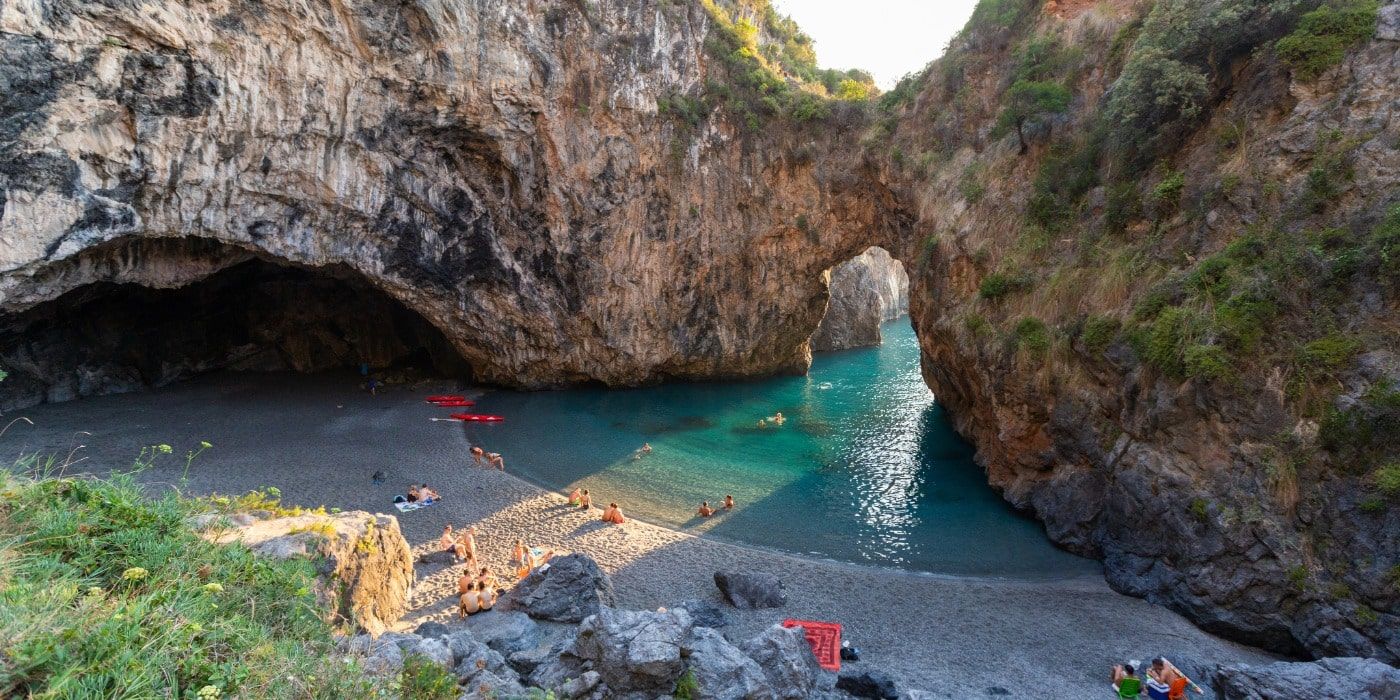

Rossella Friggione
Looking to escape the crowds? Discover 15 hidden swimming spots Italy offers for wild swimming, scenic beauty, and full relaxation.